Here I am. Say no more. I’m bigger and tastier than you are. Plus I do semaphore.
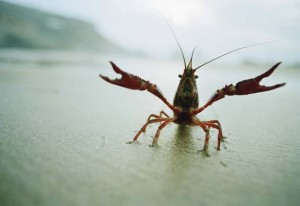
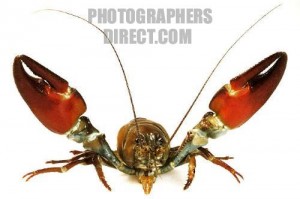

ANIMALS, PEOPLE AND THOSE IN BETWEEN
Here I am. Say no more. I’m bigger and tastier than you are. Plus I do semaphore.


Another cheerful celebration of the squirrel commando, Paul Parker, just in from the Daily Mail.

Paul Parker loves grey squirrels. Especially when they’ve been slow-cooked for eight hours with thyme, garlic and tomatoes.
Certainly my braised grey squirrel on a cherry tomato risotto – £12.95 at the Manor House Inn, 15 miles outside Newcastle, near Hadrian’s Wall – falls effortlessly off the bone and leaves a rich, gamey taste in the mouth, not unlike rabbit or pheasant…
‘I can’t sell them quick enough,’ says Paul. ‘I had 300 of them in the freezer. They’re all gone.’
The lean meat – there’s barely a trace of fat on these trim, athletic creatures – tastes particularly good after an energetic morning spent shooting squirrels and skinning them with Paul, up and down the Tyne valley, heading west from Newcastle towards the edge of the Pennines.
Paul, who is 45, runs a pest control company. Bees, wasps, bed bugs, squirrels, fleas, cockroaches, rodents and rabbits are all in his sights.
‘You hate them, we love them,’ is painted on the side of his van.

Some introduced species to Britain by the Romans include:
Brown hare, Roman snail, Peacocks, guinea fowl, pheasants, domestic cats and possibly fallow deer.
…vegetables such as cabbages, peas, celery, onions, parsnips, leeks, turnips, cucumbers, radishes, carrots and asparagus, as well as fruit, including plums, pears, grapes, apples and cherries and nuts such as walnuts.
In addition, they brought over lilies, violets, pansies, poppies and the (somewhat less pleasant) stinging nettle
see The Archeology of Animals, Simon Davis

From the Non-Native Species site:
The Chinese mitten crab is a native of East Asia, introduced into Europe in the 1930s. It is thought to have been transported to Britain in ships’ ballast water (juvenile crabs and larvae) or perhaps by adult crabs clinging to ships’ hulls. The species has six larval development stages and it is understood that for complete development the larvae need to migrate to the open sea. Dispersion of the species is assisted by the pelagic larvae and mobile adults. Adults live in freshwater migrating to river estuaries and coastal regions to breed.
From the site, Marine Aliens:
The Chinese mitten crab has increased markedly in the last 10 years in the UK. This invasive species can cause serious structural degradation and pose a significant threat to native communities in estuarine systems. As a consequence, it has been placed on the IUCN 100 of the World’s worst invasive alien species list. The largest UK population of mitten crabs is located in the Thames region, including the Medway and Blackwater estuaries. This species has also been reported from the Humber and Tyne. Click here for video footage of the Chinese mitten crab.
Chinese Mitten Crabs(大闸蟹).
A Chinese delicacy, especially when their gonads are enlarged, “They are considered as the best yummies of the Southern Yangtze River.” It appears they live in freshwater but migrate to the sea in the fall to mate – a time in which the femailes are “very plump.” (http://www.iwalku2.com/2008/10/its-season-of-yangcheng-lake-mitten-crab.html)
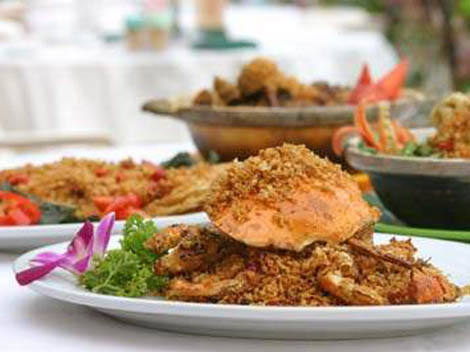
BBC News, June 02 2009
Hopper, who’s two and a half, made a bid for freedom by digging under a fence and making a hop for it towards a local forest.
Police believe the wallaby is still in the area and believed to be hiding in the Kielder Forest.
If you see him, kindly call the police on 03456 043 043.
***
In 2007, 3 wallabies escaped from a caravan park in Belford.
…and another one, who escaped from a petting zoo near Cornwall in 20o7 found a female mate in the wild, who was spotted with her joey in May 2009 on a lawn:
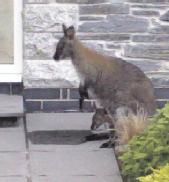
***
For the past 60 years, there has been a clatch of 60 wild wallabies living on the island of Inchconnachan, in Loch Lomond, Scotland – they’re now facing forced extermination in order to save other more native wildlife on the island with whom food resources are shared.
Iain Sheves of Luss Estates, the island management group, said
“We understand that some people view wallabies as nice and good fun but we would hope people realise that native wildlife must be paramount.”
– June 2009 Daily Record
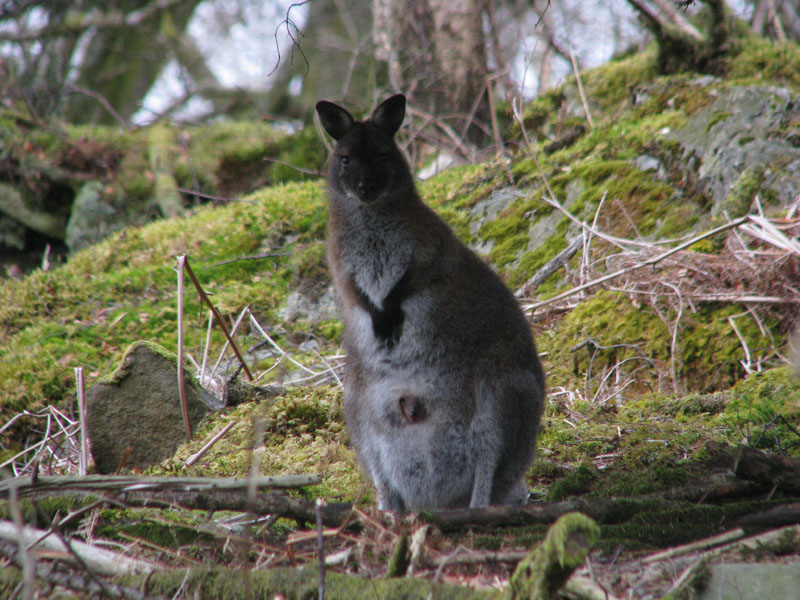
from The Guardian, March 2009:
“Eating the enemy – Alien species are being put on the menu in what campaigners say is the perfect green solution to save the UK’s native animals”
What can be done about invasive alien species? Governments and conservationists try to eradicate them, sometimes at enormous expense, but one group of people has another idea: just eat them.
Ben Carter, a north Yorkshire zoologist working in fisheries management, is making a very good living trapping the environmentally-damaging American crayfish, selling up to 20,000 a week as a gourmet delicacy to some of the country’s top chefs…
The American crayfish (Pacifastacus leniusculus) is currently a big problem in the south of England, but has reached as far north as Yorkshire and is threatening the protected native white-clawed crayfish (Austropotamobius pallipes)…
Britain is full of other non-native species, and most of them are edible. The Pacific (Crassostrea gigas) and New Zealand flat (Tiostrea lutaria) oysters, introduced here during the last century, are both now thriving along sections of the English, Irish and Welsh coasts.
Feral populations
The tiny Muntjac deer (Muntiacus reevesi), first introduced here from China to amuse the Duke of Bedford at Woburn Park in the early 20th century, has led to feral populations becoming widespread across England and Wales following escapes and deliberate release. Aficionados swear it makes lovely venison.
The ruddy duck (Oxyura jamaicensis) – very popular roasted in America – was introduced into British wildfowl collections in the 1950s. It is now widely distributed in the UK, and also threatens the survival of Spain’s white-headed duck (Oxyura leucocephala)…
Elsewhere, Britain’s waterways are threatened by an invasion of the Chinese mitten crab (Eriocheir sinensis), which could be the next environmental nuisance to take off as food…
Britain’s 5 million grey squirrels (Sciurus carolinensis) have become all but friendless in the UK for endangering the red squirrel, and … created a demand for squirrel meat – the ultimate organic free-range game.
Alongside the grey squirrel, wild boar (Sus scrofa) may not seem such a problem – or opportunity – but feral breeding populations have recently re-established themselves following illegal release or escapes of farmed stock.